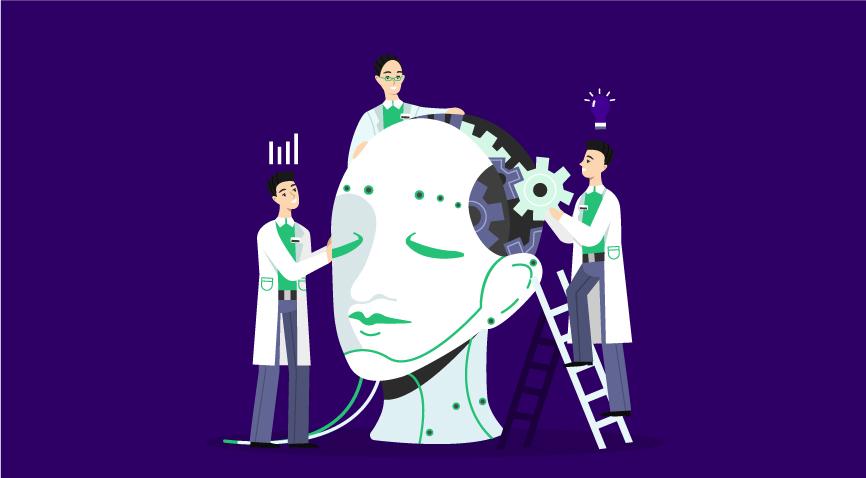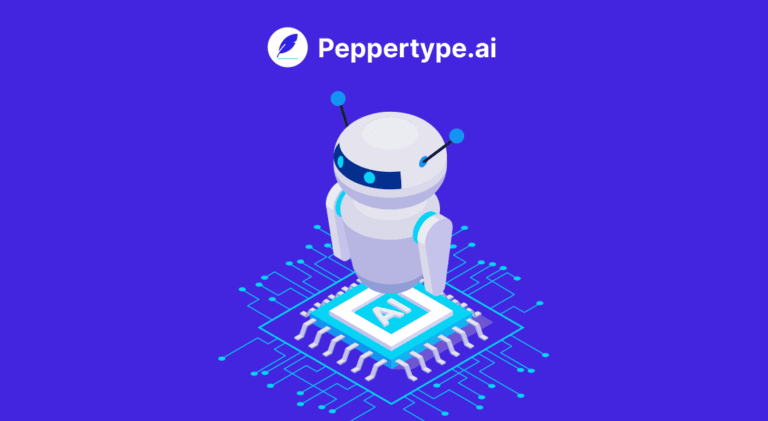What Is GPT-3 And Why Is It Revolutionizing Artificial Intelligence?

Artificial Intelligence (AI) was once seen as a solution that could potentially replace humans. A self-learning and evolving piece of technology that can be implemented into any stream and can outperform humans, AI has found its way into our lives by impacting society on many levels like security, control, analysis, and much more. Its applications can be implemented in every possible scenario, including finance, education, industrial management, etc.
Today the amount of data generated can be used effectively to power AI and Machine Learning (ML), and together they can compute numerous outcomes based on each iteration possible. AI and Deep Learning are the stepping stones to the future of automation and decision-making. Thus, the global AI market is predicted to reach a market value of $190.61 billion by 2025.
What is GPT-3
Generative Pre-Trained Transformer 3 (GPT-3) is a product of AI. It is a machine learning model that is capable of creating and writing content on its own. Yes, you read that right, a machine code with all the available data that can run and write almost anything, from poems to code.
GPT-3 is an autoregressive language model that can learn and replicate human writing mannerisms, potentially creating human-like text. It is the third-generation product in the GPT series that is effective and convincing. This module, created by SanFrancisco-based company OpenAI, and has been listed down as one of the commendable achievements of AI.
It means that the algorithms infused in GPT-3 are pre-trained with all the data required to carry out the content creation task. A publicly available dataset has been implemented here, which goes by the name of Common Crawl and the text content available on Wikipedia and other sources. It has over 100 billion parameters making it the largest language model ever encapsulated compared to any other dataset. The main reason it has been so impressive is that it has human-like dialects.
One can ask GPT-3 to be whatever you want; once after training the model, it can write code as a programmer or write a novel. OpenAI says that they can apply it ‘to any language task — semantic search, summarization, sentiment analysis, content generation, translation, and more — with only a few examples or by specifying your task in English’. The proper training given to the model could help you land that same writing style that carries the same tonality and intensity of the storyline. In simpler terms, valid historical data can help create content in inclination to your interests. It is hard to conceive, but this is what the GPT-3 model offers to the world and is quite revolutionary.
What can GPT-3 do?
Given that a problem statement has a language structure, it can create almost anything: write essays, novels, code, summarize texts and even translate texts, and much more.
Here’s a sample of things that this language prediction model is capable of doing:
- Search engine: Create a question-based search engine where you can just enter your queries, and just like Google behaves, it will direct you to a relevant page for an answer with a Wikipedia URL.
- Chatbot: A chatbot can be created that carries all the responses based on the line of questioning. The database depository would be fed with all the relevant responses related to the ideation of specific mindsets. It can be a customer care portal or a chatbot that lets you talk to historical figures. Given the amount of knowledge it has, you can get their views on topics and scenarios.
- Solving complex mathematical problems or puzzles: GPT-3 can interpret certain linguistic patterns that can be used to complete half-presented conditional cases. This feature has a wide scope to explore as it can open deep rules of language without beforehand training. The abilities are limitless even at the starting stages of developing the module.
- Code generation: a database including all the program datasets and design elements, page layouts, customized features all to your choice in simple words, and GPT-3 can potentially chart out the codes relevant to complete the program to fully functioning condition. Without looking for bugs, one can simply test and run the code easily.
- Medical questions: Answer questions related to medical procedures or medication strategies. The user can enter the patient’s condition, and the artificial intelligence would list out the contingency plans that are to be put in motion to avert the situation. It would also give a synopsis of the situation and relevant reasoning towards its approach.
- Completing half-developed images: This module was deeply explored in GPT-3, where the models were trained to increase their flexibility and decode the image construction by building on the GPT architecture. You can refer to the trial images used, which have rendered and developed images by learning on visual data feed.
How Does GPT-3 work?
To put the GPT-3 prediction language to work and increase its efficiency and output requires a lot of pre-defined parameters and variables. The algorithmic structure is designed to gather the data and predict the following piece of language that is most suitable and carries the tone further in a similar sense.
OpenAI has unleashed its resources to help GPT-3 understand how languages work and how they are placed chronologically and transforming content into the most useful form of language for the user. Learning how to build sentences means constructing each part by analyzing and studying the meanings and how the usage of words would affect the sentence depending on the context required.
The sentences are broken down and reconstructed from training the texts themselves.
In a sample sentence, let us assume that the single ending word is missing to complete the sentence. The training model will run all the iterations possible in the training data and look for the right word that fits in the sequence to recreate the original phrase.
Before listing out the correct option, it will potentially run millions of times. By weighing the original input data, it will have a correct answer. In this process, it gradually learns the methods and questions that are most likely to be asked, and it helps GPT-3 generate a more appropriate response with progression. The process is dynamic and quite large, making it one of the most advanced features of artificial technology.
What Are Some Problems with GPT-3?
OpenAI has reported usage of thousands of petaflop/s-days of computing resources consumed for training GPT-3. Whereas GPT-2 was responsible for consuming just tens of petaflop/s-days.
Machine learning models are only as good or bad, depending on the training data they have been provided. In some test cases where there was negative data added to the dataset, the module produced negative comments to questions posted on the algorithm. The module is trained to generate answers based on its input, and it does not know to distinguish between right or wrong. As a result, the answers/output can be biased and cause problems as the findings could be quite toxic.
If a model carries racist slang or negative sentiment, this will escalate the situation to an ugly mode. The negatively toned language could be found offensive by the viewers and create more problems than creating solutions.
OpenAI has also listed that though it has applications in the medical industry, there is some grey area. The model’s interpretation of a patient is only what you give it to perceive. The AI might suggest some association paths that might put the patients’ health at risk.
If GPT-3 is used as a grading mechanism to grade papers of students, it may be partial to grade the papers of different cultures differently. There are different writing styles and patterns. The AI will only compare with the database type that it has; other articles may be good but not in the rightful pattern expected by the algorithm. This could affect the grades and may cause an issue based on their caste, though it’s none of their faults.

Conclusion
The creators of GPT-3 are still working on sharpening its features and ensuring that it would not be banned. As for the longer term, its benefits overshadow the risks it has to offer. The solution could lie in the collaborative intelligence of humans and AI. This monitored combination where humans oversee AI operations can ensure that delivered solutions are on the right path keeping the greater good of an unbiased perspective.
Latest Blogs
Explore how Google’s 2025 AI search updates triggered ranking chaos. Learn actionable strategies to adapt your SEO for AI Overviews, zero-click searches, and SERP volatility. Stay ahead now.
Learn how to rank on AI search engines like ChatGPT, Perplexity, and Gemini by optimizing your content for authority, structure, and relevance. Stay ahead in AI-driven search with this strategic guide.
Explore the best healthcare SEO services for your medical practice. Improve online visibility and effectively reach more patients in need of your services.
Get your hands on the latest news!
Similar Posts

Peppertype.ai
4 mins read
Taking Writing to the Next Level with Peppertype.ai and GPT-3’s Text-Davinci-003

Peppertype.ai
7 mins read
How Content Generators Work And How To Use Them Effectively

Peppertype.ai
6 mins read